Technologies
Moto G 5G (2023) Review: A Tough Buy, Even for $250
Motorola’s newest affordable phone provides plenty for $250, but you may want to consider cheaper options.
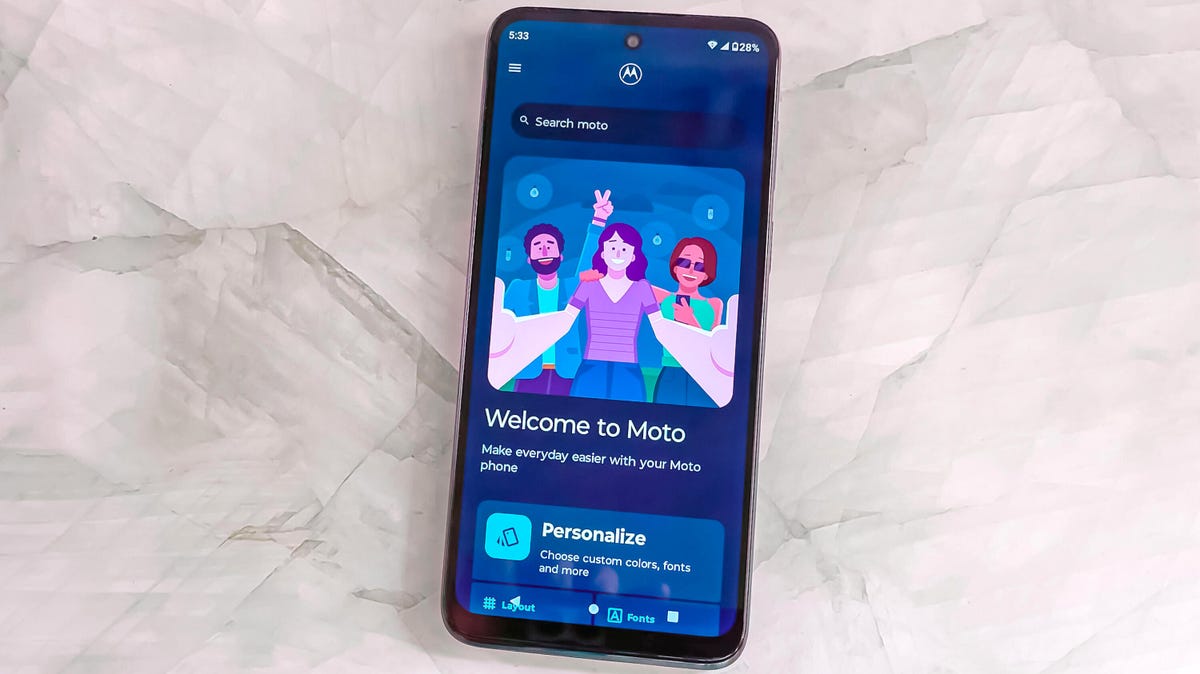
The $250 Moto G 5G is not a bad phone. It’s just that you might get more value looking around.
I kept returning to that feeling throughout my weeks reviewing the phone, despite the dramatically reduced price this year’s model hits compared with last year’s $400 Moto G 5G. For instance, I like the phone’s 6.5-inch 120Hz display. But the screen isn’t dramatically better than the 90Hz displays I see in $200 phones like the Moto G Stylus or the Samsung Galaxy A14 5G.
The 5G connectivity is noticeably fast compared with 4G-only phones like the Stylus, but the Moto G 5G’s slower Snapdragon 480 Plus processor coupled with 4GB of RAM aren’t quite enough to power resource-heavy multitasking that truly take advantage of 5G speeds.
Even though the Moto G 5G’s cameras are similar those on other Moto G phones, photos are hit or miss. Images come out nice in bright outdoor areas but struggle with getting detail in low-light environments. I took the phone on a sunny Central Park picnic and got a lot of vibrant photos that I’m super happy with. But the opposite was true when I took the phone to a Kim Petras performance thrown by Motorola, where my photos on the crowded indoor dance floor came out blurry, noisy and lacked a lot of detail. It’s typical for this price range, and is a similar issue across all of the Moto G phones that I’ve tested this year.
When I compare the Moto G 5G against phones that are just $50 more, I realize how much I’m sacrificing. If you can swing it, $300 phones offer a lot of perks that are worth the upcharge. The $300 Moto G Power 5G for instance doubles your available storage space to 256GB, which is the cheapest phone I’m currently aware of offering that much internal space. The $300 OnePlus Nord N30 5G can quickly recharge its battery from nothing to 100% in 45 minutes with its included charger. By comparison the Moto G 5G takes well over 90 minutes to do the same thing.
And whenever the Pixel 6A is on sale for $299 — its power, performance, photography and longer software support outshine all of these $300 and under phones.
The Moto G 5G tries to hit a strange middle ground between $200 phones and $300 phones, but I think it’s more likely you’ll spend slightly less money or slightly more money on a different phone. Again, that’s not to say the Moto G 5G doesn’t offer a lot for $250. It’s just that you can get a very similar phone and save $50, or get a substantially better phone by spending $50 more.
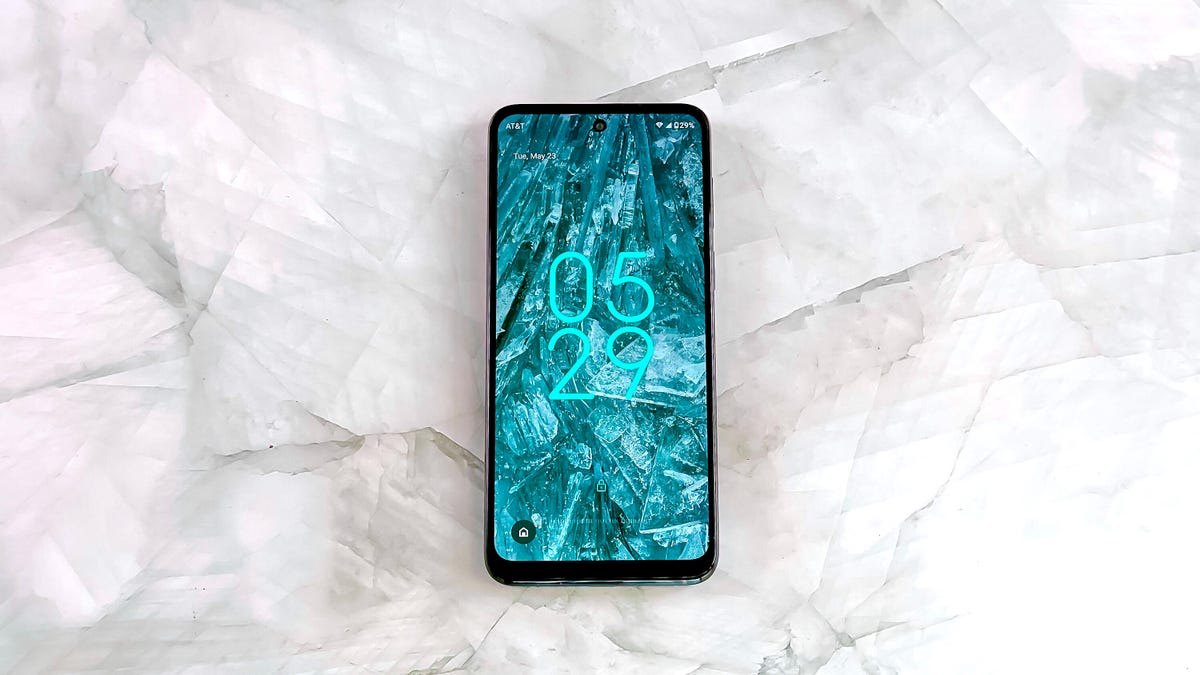
Moto G 5G design, specs, performance
The Moto G 5G is one of the cheapest phones I’ve seen that has a 120Hz refresh rate display. I found the phone animates very smoothly when reading websites, scrolling apps and playing games, and that’s quite appreciated even with the display’s lower 720p resolution. But like I mentioned earlier, due to that lower resolution I don’t feel like the screen looks that much better than the 90Hz 720p displays I see in phones that cost less. It also left me missing the more detailed 120Hz 1,080p displays I see on the $300 Moto G Power 5G and the OnePlus Nord N30 5G.
The phone’s otherwise basic design comes in two color options: Harbor Gray or Ink Blue. The display includes a hole punch for its 8-megapixel selfie camera. The back of the phone highlights its two cameras, a 48-megapixel main camera and a 2-megapixel macro camera. It’s a simple matte plastic design, which does pick up smudges.
Along the sides of the phone are a power button that doubles as a fingerprint sensor, a headphone jack, a SIM card tray and a microSD card slot. It continues to be notable that the headphone jack and microSD card remain standard features in this price range, as they are otherwise rare finds on more expensive phones.
The phone’s performance is adequate. I didn’t experience problems with most tasks such as making phone calls, reading articles, listening to music or playing games. However, more demanding apps might overwhelm the phone’s processor and 4GB of RAM, which I consistently experienced when I tried to play Marvel Snap while toggling between other tasks. The game reloaded whenever I switched apps, which was an issue because I usually like to play it while multitasking since Snap is a card game.
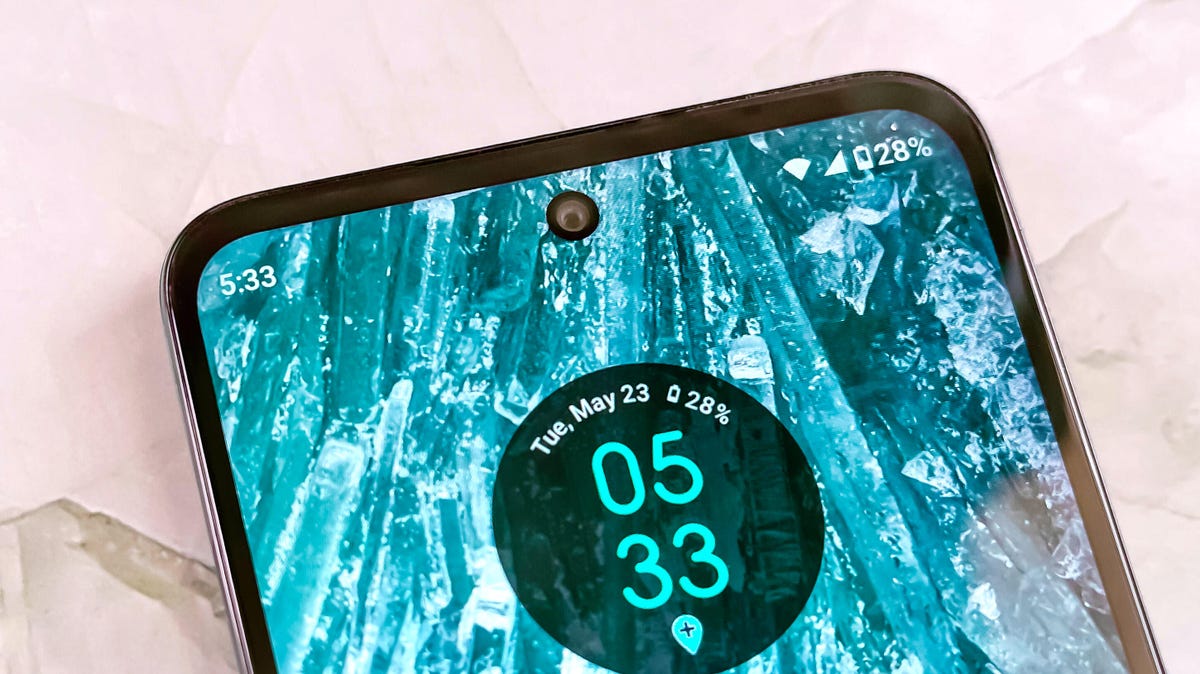
Those who just need a phone for making calls, sending texts, listening to music and reading news articles will likely be satisfied with the Moto G 5G. The phone’s 128GB of space should be plenty of room for storing apps, photos and media — but the option to expand with a microSD card means you can add more if you need to.
The issue with the Moto G 5G, however, is that its middling performance makes me question whether I get that much more value out of this it compared with the cheaper Moto G Stylus. In my Geekbench testing the Moto G 5G’s processor does run faster than the Stylus. Yet in real-world use, I felt like performance between the two phones was about the same — slightly sluggish but gets me through most tasks.
Geekbench 6 Benchmarks
- Single-core
- Multi-core
For some people, a faster data connection is worth the extra money. 5G networks are starting to hit a point of maturity where many devices benefit from faster video streaming and downloading while on the go. However, 4G LTE is still quite capable and ubiquitous. Unless you plan on tackling cloud gaming or have a lot of large files to regularly upload from your phone, there’s hardly anything yet that truly requires a 5G connection.
Another miss for me is that the Moto G 5G, like all Moto G phones, will receive only one software update and three years of security updates.

Moto G 5G photography
The Moto G 5G’s photos are colorful with plenty of detail when taken in daylight. While on that aforementioned Central Park picnic, both regular pictures and portrait mode photos came out vibrant with a pronounced bokeh effect on the latter. However, the mix of bright highlights, like clouds and shadows under the trees show just how limited the Moto G 5G’s dynamic range is.


I took the photo below with the 8-megapixel front-facing camera. This was inside of a well-lit elevator, but the photos has more details than I would have expected.

Below are closeups of pets and food, which look OK.
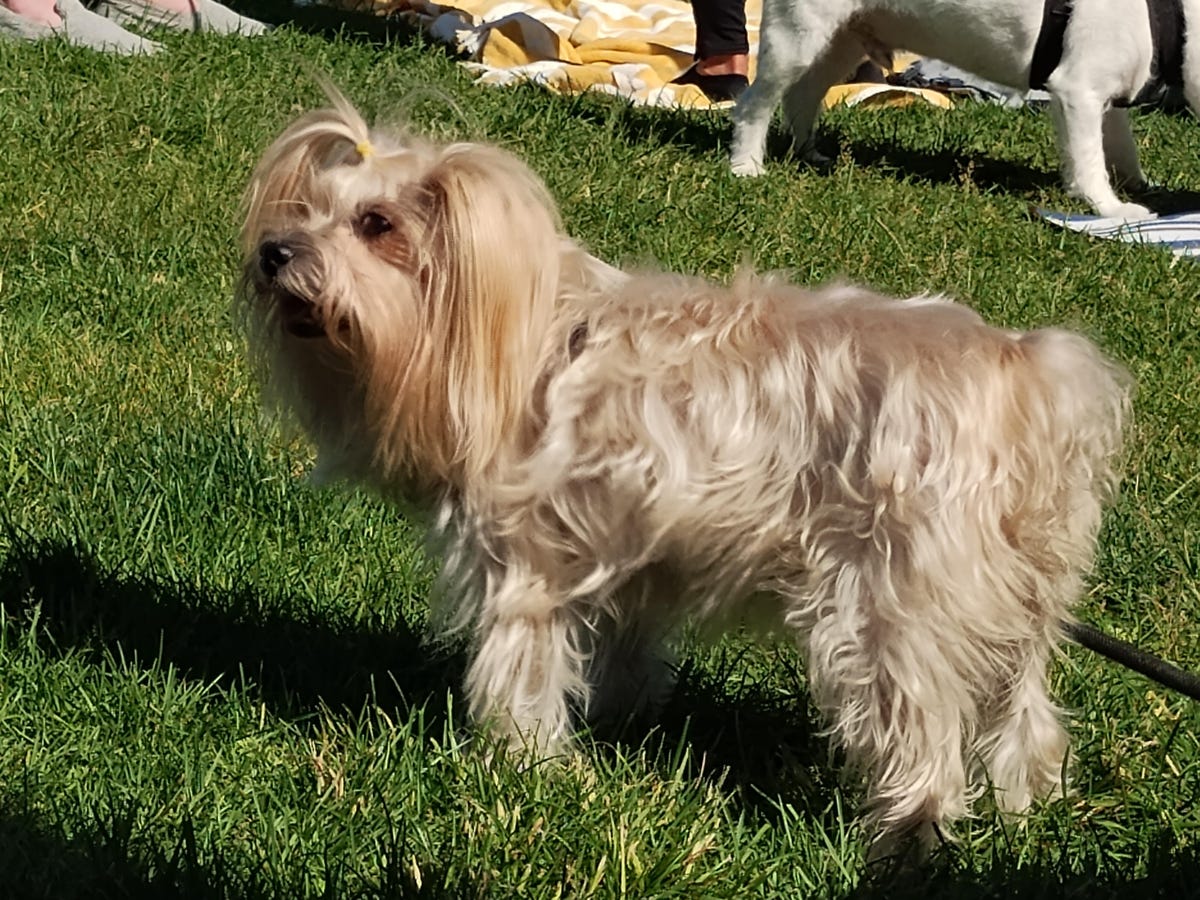

And here are the pictures that I took at that Motorola event with Kim Petras and Cirque Du Soleil. The Moto G 5G struggled to document the action so poorly that I switched to my personal phone to share photos with friends.



But these camera pluses and minuses aren’t isolated to the Moto G 5G. I had the roughly the same camera challenges across the Moto G Stylus, Moto G 5G and the Moto G Power 5G. Since you’re not getting better camera quality by paying more for the Moto G 5G, Motorola’s cheaper option could be the better choice as long as you don’t mind sacrificing 5G.
In my comparison photos below of the grass wall in CNET’s office, all three phones were similarly able to differentiate between the different shades of green featured in the decoration.
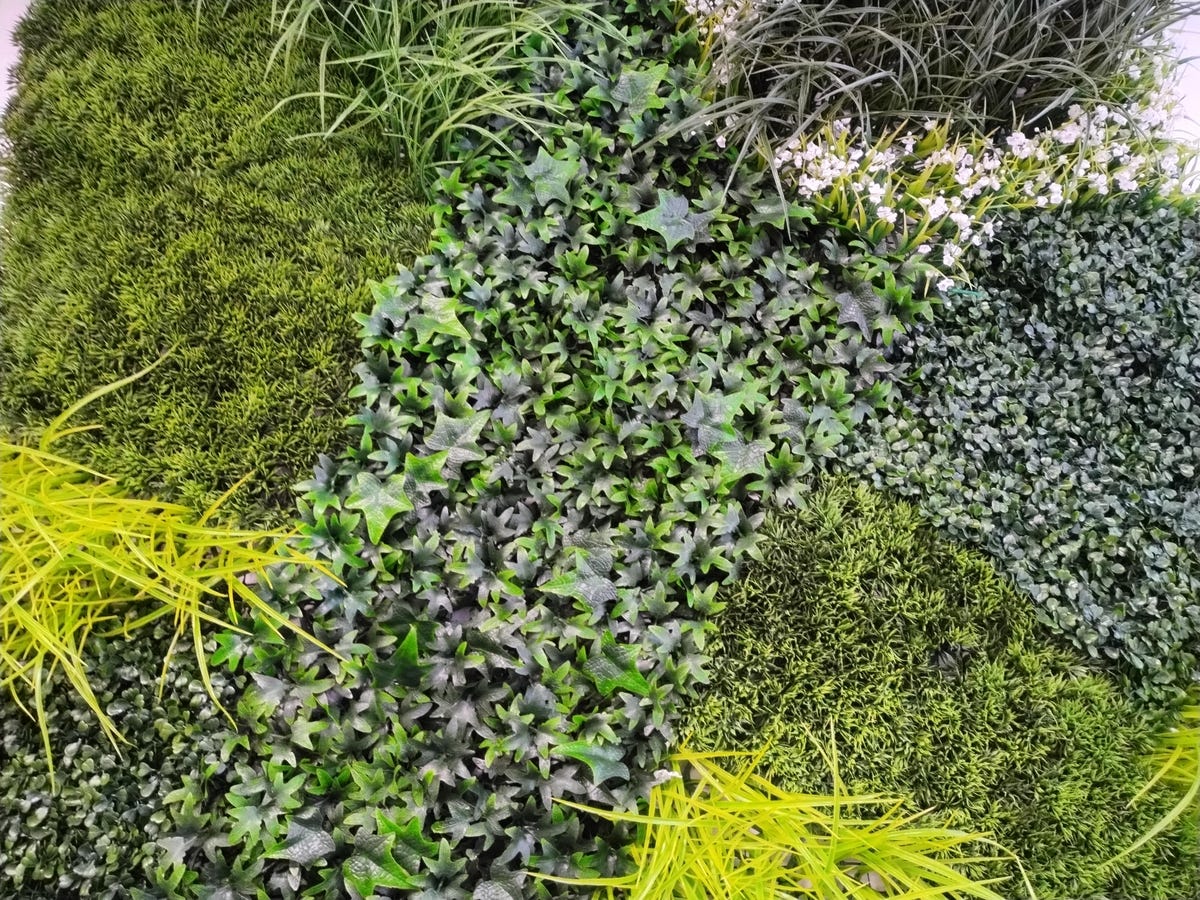
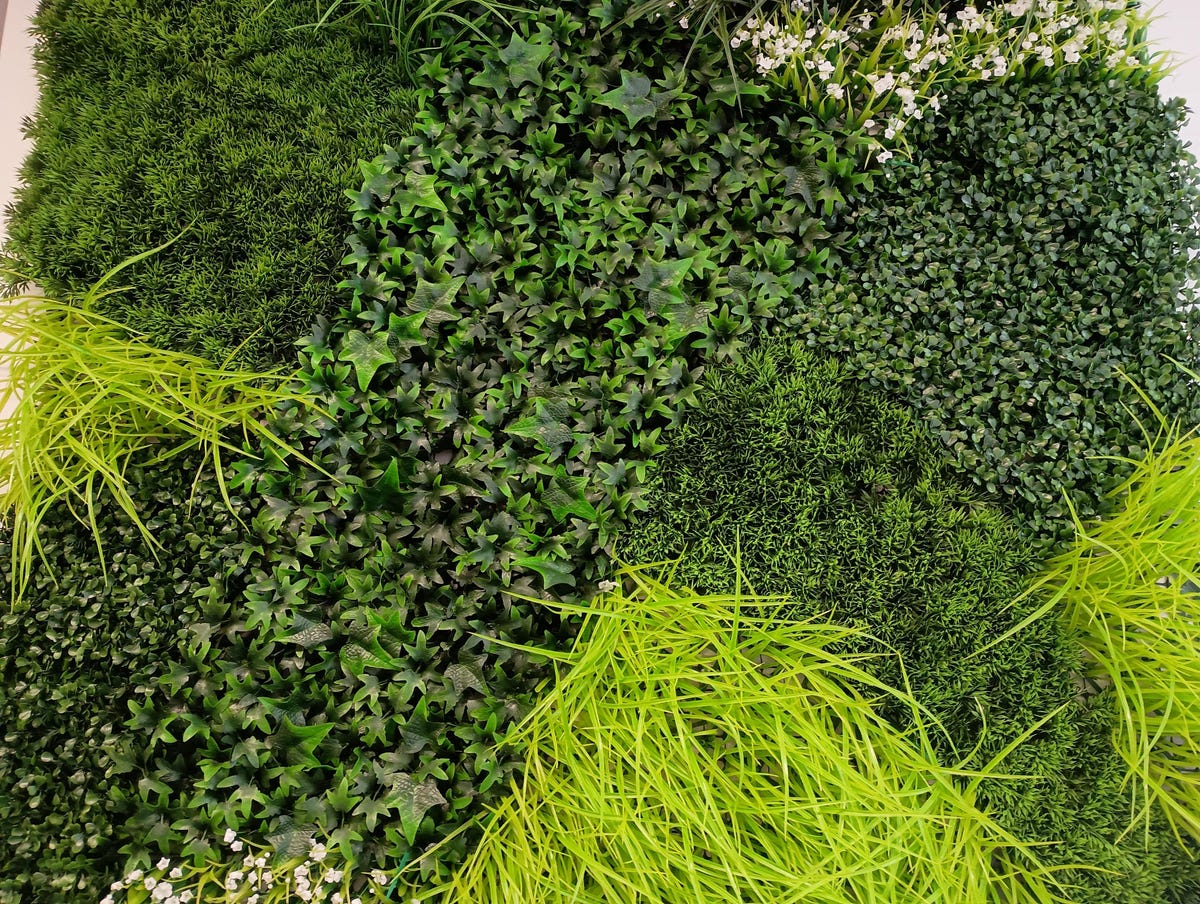

While I’m still in the process of testing the $200 Samsung Galaxy A14 5G, I took a comparison photo of the same grass wall, finding the image quality to be a little more saturated by comparison.

Moto G 5G bottom line
The $250 Moto G 5G does include a lot of value for its price. You get a 120Hz display at one of the cheapest prices I’ve seen so far, along with 5G compatibility. Its processor can stand up to most tasks, even if it struggles with some multitasking. And if your carrier ends up subsidizing the phone to a price that’s free or close to free, it’s a very appealing option for someone that just wants a basic 5G phone.
But if you aren’t getting a carrier subsidy, I recommend you either consider Motorola’s cheaper Stylus or phones that are $50 more expensive. The 4G-only $200 Moto G Stylus includes much of the same functionality as the Moto G 5G along with a built-in stylus, but it comes with 64GB of storage, a noticeable step down.

There’s a lot to gain from stretching your budget beyond the Moto G 5G’s $250 price, if you can. For example, the $300 Moto G Power 5G offers twice the storage, while the $300 OnePlus Nord N30 provides exceptionally fast charging.
The Moto G 5G does include many essential features that I want to see in a cheaper phone, but it just feels lost compared with other options in this price range. In some ways it’s so similar to $200 phone options, that it doesn’t stand out enough to justify the extra money. Yet it also doesn’t stand out enough at $250 when phones that cost just a little bit more are including tangible features that can increase how useful your phone can be.
Moto G 5G vs. Moto G Stylus vs. Moto G Power 5G vs. OnePlus Nord N30 5G vs. Google Pixel 6A
| Moto G 5G (2023) | Moto G Stylus (2023) | Moto G Power 5G (2023) | OnePlus Nord N30 5G | Google Pixel 6A | |
|---|---|---|---|---|---|
| Display size, resolution | 6.5-inch HD Plus LCD display (720p resolution); 120Hz refresh rate | 6.5-inch IPS LCD; 1,600×720; 90Hz refresh rate | 6.5-inch LCD display; 2,400×1,080 pixels; 120Hz refresh rate | 6.72-inch FHD (1080p resolution); 120Hz refresh rate | 6.1-inch OLED; (1,080 x 2,400); 60Hz |
| Pixel density | 269 ppi | 269 ppi | 405 ppi | 391 ppi | 429 ppi |
| Dimensions (inches) | 6.45 x 2.95 x 0.33 in. | 6.41 x 2.91 x 0.36 in. | 6.41 x 2.94 x 0.33 in. | 6.51 x 2.99 x 0.32 in. | 6.0 x 2.8 x 0.35 in. |
| Dimensions (millimeters) | 163.94 x 74.98 x 8.39mm | 162.9 x 74.1 x 9.2mm | 163 x 75 x 8.45mm | 165.5 x 76 x 8.3mm | 152.2 x 7.18 x 8.9mm |
| Weight (ounces, grams) | 189g (6.66 oz.) | 195 g | 185 g (6.52 oz.) | 195g (6.97 oz.) | 6.3 oz.; 178g |
| Mobile software | Android 13 | Android 13 | Android 13 | Android 13 | Android 12 |
| Camera | 48-megapixel main, 2-megapixel macro | 50-megapixel (main), 2-megapixel (macro) | 50-megapixel (main), 2-megapixel (macro), 2-megapixel (depth sensor) | 108-megapixel main, 2-megapixel macro, 2-megapixel depth sensing | 12.2-megapixel (wide), 12-megapixel ultra wide) |
| Front-facing camera | 8-megapixel | 8-megapixel | 16-megapixel | 16-megapixel | 8-megapixel |
| Video capture | 720p at 30 fps | 1080p at 30 fps | 720p at 60 fps | 1080p at 30 fps | 4K |
| Processor | Snapdragon 480 Plus | MediaTek Helio G85 | MediaTek Dimensity 930 | Qualcomm Snapdragon 695 | Google Tensor |
| RAM/Storage | 4GB + 128GB | 4GB + 64GB; 4GB + 128GB | 4GB RAM + 128GB; 6GB RAM + 256GB | 8GB + 128GB | 6GB RAM/128GB storage |
| Expandable storage | Yes | Yes | Yes | Yes | None |
| Battery/Charger | 5,000 mAh (15W charging) | 5,000 mAh (15W charging) | 5,000 mAh (15W wired charging speed, 10W adapter included) | 5,000 mAh (50W wired charging) | 4,410 mAh capacity; 18-watt fast charging (adapter sold separately) |
| Fingerprint sensor | Side | Side | Side | Side | Under display |
| Connector | USB-C | USB-C | USB-C | USB-C | USB-C |
| Headphone jack | Yes | Yes | Yes | Yes | None |
| Special features | 5G enabled, dual stereo speakers, Moto Gestures | Stylus, Moto Gestures | Estimated 38-hour battery life, Moto Gestures, stereo speakers | 50W SuperVooc fast charging, 108-megapixel main camera, game mode, dual stereo speakers | 5G-enabled, 18W fast charging, WiFi 6E, security updates for 5 years, Android OS updates for 3 years, dual SIM, IP67 water resistance |
| Price off-contract (USD) | $250 | $200 | $300 | $300 | $349 ($299 when on sale) |
| Price (GBP) | N/A, Converts to £195 | Converts to £158 | Converts to £240 | Converts to £238 | £349 |
| Price (AUD) | N/A, Converts to £380 | Converts to AU$295 | Converts to AU$445 | Converts to AU$443 | AU$599 |
How we test phones
Every phone tested by CNET’s reviews team was actually used in the real world. We test a phone’s features, play games and take photos. We examine the display to see if it’s bright, sharp and vibrant. We analyze the design and build to see how it is to hold and whether it has an IP-rating for water resistance. We push the processor’s performance to the extremes using both standardized benchmark tools like GeekBench and 3DMark, along with our own anecdotal observations navigating the interface, recording high-resolution videos and playing graphically intense games at high refresh rates.
All the cameras are tested in a variety of conditions from bright sunlight to dark indoor scenes. We try out special features like night mode and portrait mode and compare our findings against similarly priced competing phones. We also check out the battery life by using it daily as well as running a series of battery drain tests.
We take into account additional features like support for 5G, satellite connectivity, fingerprint and face sensors, stylus support, fast charging speeds, foldable displays among others that can be useful. And we balance all of this against the price to give you the verdict on whether that phone, whatever price it is, actually represents good value.
Technologies
Controversy Brews: US Government Targets Banning Top Wi-Fi Router
Federal departments and agencies are joining forces in an effort to ban TP-Link routers due to concerns about national security risks.

TP-Link routers might not be available for much longer in the US, according to a Washington Post report last week. A potential ban is looking increasingly likely, as more than half a dozen federal departments and agencies back the proposal,
The news first broke in December of last year, when The Wall Street Journal reported that investigators at the Departments of Commerce, Defense and Justice had all opened probes into the company due to national security risks stemming from its ties to China. Since then, news on the TP-Link front has been relatively quiet.
Now, the proposal has gained interagency approval.
Read more: I Asked 4 Cybersecurity Experts If They Would Still Use a TP-Link Router
Why are plans to ban TP-Link routers being pushed?
«Commerce officials concluded TP-Link Systems products pose a risk because the US-based company’s products handle sensitive American data and because the officials believe it remains subject to jurisdiction or influence by the Chinese government,» the Washington Post reported.
TP-Link’s ties to the Chinese government are only allegations. The company — technically called TP-Link Systems — has strenuously denied to me in the past that it’s a Chinese company.
«As an independent US company, no foreign country or government, including China, has access to or control over the design and production of our products,» a TP-Link spokesperson told CNET.
The history of the TP-Link routers
TP-Link was founded in Shenzhen, China, in 1996 by two brothers, Jeffrey (Jianjun) Chao and Jiaxing Zhao. In October 2024, two months after members of the House Select Committee called for an investigation into TP-Link routers, the company split into two: TP-Link Technologies and TP-Link Systems.
The latter is headquartered in Irvine, California, and has approximately 500 employees in the US and 11,000 in China, according to the Washington Post report. TP-Link Systems is owned by Chao and his wife.
«TP-Link’s unusual degree of vulnerabilities and required compliance with [Chinese] law are in and of themselves disconcerting,» the lawmakers wrote in October 2024. «When combined with the [Chinese] government’s common use of [home office] routers like TP-Link to perpetrate extensive cyberattacks in the United States, it becomes significantly alarming.»
The company has become a dominant force in the US router market since the pandemic. According to the Journal report, it grew from 20% of total router sales in 2019 to around 65% this year. TP-Link disputed these numbers to CNET, and a separate analysis from the IT platform Lansweeper found that 12% of home routers currently used in the US are made by TP-Link. More than 300 internet providers issue TP-Link routers to their customers, according to the Wall Street Journal report.
Why are TP-Link routers being investigated?
Separately, the Department of Justice’s antitrust division is investigating whether TP-Link engaged in predatory pricing tactics by artificially lowering its prices to muscle out competitors.
CNET has several TP-Link models on our lists of the best Wi-Fi routers and will monitor this story closely to see if we need to reevaluate those choices.
«We do not sell products below cost. Our pricing is not only above cost but contributes a healthy profit to the business,» a TP-Link spokesperson told CNET.
The potential ban has been through an interagency review and is currently in the hands of the Department of Commerce. According to the Washington Post report, sources familiar with the details of the ban said the Trump administration’s ongoing negotiations with China have made the chances of a ban less likely in the near future.
«Any concerns the government may have about TP-Link are fully resolvable by a common-sense mix of measures like onshoring development functions, investing in cybersecurity, and being transparent,» the spokesperson said. «TP-Link will continue to work with the US Department of Commerce to ensure we understand and can respond to any concerns the government has.»
Don’t miss any of our unbiased tech content and lab-based reviews. Add CNET as a preferred Google source.
How worried should you be about your TP-Link router?
I wrote a few months ago that I wasn’t in any rush to replace my own TP-Link router, and that’s essentially how I still feel today.
When the news first broke last December, I asked four cybersecurity experts whether they would still use a TP-Link router. One gave a strong «no.» Another said there is «risk for a consumer.» And two declined to answer the question directly.
Itay Cohen was one of the authors of a 2023 report that identified a firmware implant in TP-Link routers linked to a Chinese state-sponsored hacking group. He told me in a previous interview that similar implants have been found on other router brands manufactured all over the world.
«I don’t think there’s enough public evidence to support avoiding routers from China outright,» Cohen said. «The vulnerabilities and risks associated with routers are largely systemic and apply to a wide range of brands, including those manufactured in the US.»
I heard a version of that from every cybersecurity expert I spoke with. TP-Link has security flaws, but so do all routers, and I couldn’t point to any that showed collaboration with the Chinese government specifically.
«We’ve analyzed an astonishing amount of TP-Link firmware. We find stuff, but we find stuff in everything,» said Thomas Pace, CEO of cybersecurity firm NetRise and former security contractor for the Department of Energy.
That said, it’s entirely possible that the government is aware of vulnerabilities that the public is not.
For now, I’m still comfortable using a TP-Link router knowing I follow some basic best practices for network security, but my risk tolerance may be higher than it is for others.
How to protect your network if you have a TP-Link router
If you’re one of the millions of Americans who uses a TP-Link router, the news of a potential ban might be unnerving.
A Microsoft report from last year found that TP-Link routers have been used in «password spray attacks» since August 2023, which typically occur when the router is using a default password.
Here’s what you can do to protect yourself right now:
Update your login credentials. A shocking amount of router attacks occur because the user never changed the default login credentials set by the router manufacturer. Most routers have an app that lets you update your login credentials, but you can also type your router’s IP address into a URL. These credentials are different from your Wi-Fi name and password, which should also be changed every six months or so. As always with passwords, avoid common words and character combinations, longer passwords are better and don’t reuse passwords from other accounts.
Use a VPN. If you’re worried about prying eyes from the Chinese government or anyone else, the single best thing you can do to ensure your connection remains private is to use a quality VPN. Privacy-minded folks should look for advanced features like obfuscation, Tor over VPN and a double VPN, which uses a second VPN server for an added layer of encryption. You can even install a VPN on your router directly so that all your traffic is encrypted automatically.
Turn on the firewall and Wi-Fi encryption. These are typically on by default, but now is a good time to make sure they’re activated. This will make it harder for hackers to access the data sent between your router and the devices that connect to it. You can also find these settings by logging into your router from its app or website.
Consider buying a new router. I always recommend buying your own router instead of renting one from your internet service provider. This is mostly a cost-saving measure, but if your ISP uses TP-Link equipment, now might be a good time to switch to another brand. The main thing to look for is WPA3 certification — the most up-to-date security protocol for routers.
Update your firmware. TP-Link’s spokesperson told me last year that customers should regularly check for firmware updates to keep their router secure. «To do this, customers with TP-Link Cloud accounts may simply click the ‘Check for Updates’ button in their product’s firmware menu,» the spokesperson said. «All other customers can find the latest firmware on their product’s Downloads page on TP-Link.com.»
Technologies
Today’s NYT Mini Crossword Answers for Saturday, Nov. 8
Here are the answers for The New York Times Mini Crossword for Nov. 8.

Looking for the most recent Mini Crossword answer? Click here for today’s Mini Crossword hints, as well as our daily answers and hints for The New York Times Wordle, Strands, Connections and Connections: Sports Edition puzzles.
Need some help with today’s Mini Crossword? It’s the long Saturday one, so you might need assistance. Read on for the answers. And if you could use some hints and guidance for daily solving, check out our Mini Crossword tips.
If you’re looking for today’s Wordle, Connections, Connections: Sports Edition and Strands answers, you can visit CNET’s NYT puzzle hints page.
Read more: Tips and Tricks for Solving The New York Times Mini Crossword
Let’s get to those Mini Crossword clues and answers.
Mini across clues and answers
1A clue: Uber alternative
Answer: CAB
4A clue: Red-headed character in the «Scooby-Doo» franchise
Answer: DAPHNE
7A clue: Not arrive on time
Answer: RUNLATE
8A clue: Label on a green U.S.D.A. sticker
Answer: ORGANIC
9A clue: Prestigious engineering school in Pasadena
Answer: CALTECH
10A clue: Prepares to be knighted
Answer: KNEELS
11A clue: Parts of a city grid: Abbr.
Answer: STS
Mini down clues and answers
1D clue: Fashion brand with an interlocking «C» logo
Answer: CHANEL
2D clue: Silly behaviors
Answer: ANTICS
3D clue: Tree with smooth gray bark
Answer: BEECH
4D clue: Kevin ___, 15-time N.B.A. All-Star
Answer: DURANT
5D clue: They’re measured in degrees
Answer: ANGLES
6D clue: Division of the earth’s crust
Answer: PLATE
7D clue: Ice, in bartending lingo
Answer: ROCKS
Technologies
Spotify Brings Wrapped Energy Year-Round With Friend-Sharing Stats
The music service introduced new ways for music nerds to share their listening habits with friends.

It can be a long wait for Spotify Wrapped, the end-of-year promotion that allows Spotify users to view and share their listening habits. Now, users can keep an eye on those stats daily, plus share their listening habits with friends.
You can view your Spotify usage statistics every 24 hours and share your updates via social media services, such as Instagram Notes or Spotify Messages. The new share icon gives you access to eight different services where you can post your stats.
Every week, you’ll get updates on your top artists and songs from the past month, and Spotify will recommend new playlists. The app also gives you a «special highlight» based on a specific artist or song.
To access your personal musical data, click on your profile in the top left corner of the app and scroll down to «listening stats.»
Don’t miss any of our unbiased tech content and lab-based reviews. Add CNET as a preferred Google source.
The new features are somewhat similar to Spotify Wrapped, the service’s annual end-of-year review of users’ listening habits, which is designed to be shared. Every year, Spotify adds extra details to Wrapped, such as assigning users a listening personality or a city that supposedly reflects their music tastes. It’s been the most popular way for Spotify users to view and share their music listening in the past. A number of third-party services do the same thing, including Volt.fm.
Read more: Best Music Streaming Services
Spotify is the world’s largest music streaming service, offering 100 million tracks and serving more than 713 million users. In addition to its $12-per-month subscription service, Spotify also offers a free, ad-supported option.
-

 Technologies3 года ago
Technologies3 года agoTech Companies Need to Be Held Accountable for Security, Experts Say
-

 Technologies3 года ago
Technologies3 года agoBest Handheld Game Console in 2023
-

 Technologies3 года ago
Technologies3 года agoTighten Up Your VR Game With the Best Head Straps for Quest 2
-

 Technologies4 года ago
Technologies4 года agoVerum, Wickr and Threema: next generation secured messengers
-

 Technologies4 года ago
Technologies4 года agoBlack Friday 2021: The best deals on TVs, headphones, kitchenware, and more
-

 Technologies4 года ago
Technologies4 года agoGoogle to require vaccinations as Silicon Valley rethinks return-to-office policies
-

 Technologies4 года ago
Technologies4 года agoOlivia Harlan Dekker for Verum Messenger
-

 Technologies4 года ago
Technologies4 года agoiPhone 13 event: How to watch Apple’s big announcement tomorrow
